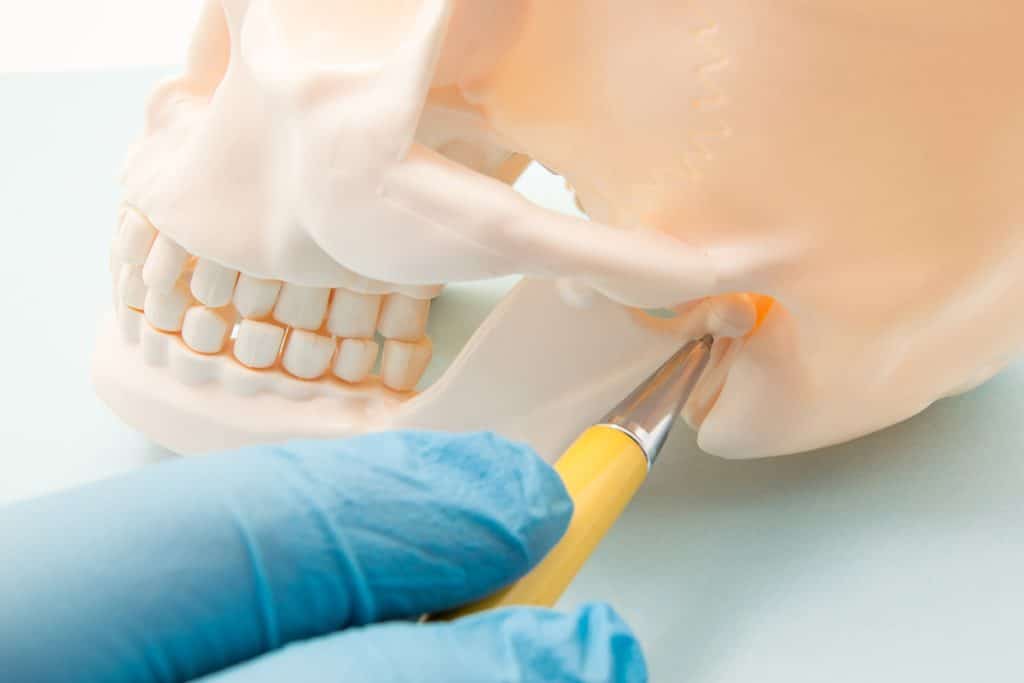Can TMJ Be Cured?

TMJ disorder frequently causes pain and disrupts daily life. In this article, we dive into the latest research on treating TMJ and potential cures.
Our aim is to help you grasp the intricacy of this condition. Using expert insights and scientific studies, we examine ways to manage and resolve TMJ.
If you or a loved one suffers from TMJ, knowledge is crucial. Comprehending the nuances of this disorder paves the path to relief.
Understanding TMJ (Temporomandibular Joint) Disorder
TMJ disorder affects the hinge joint connecting the jawbone and skull. This complex joint allows essential motions like chewing, speaking, and making facial expressions. When the TMJ develops problems, daily functions become painful and difficult.
The origins of TMJ are complicated by many possible factors. Jaw injury, arthritis, muscle tightness, teeth grinding, poor posture, and stress can all disrupt joint function. Given the intricate nature of the temporomandibular joint and the diverse causes of TMJ, finding effective treatment is a real challenge.
Finding relief from TMJ pain and limitations requires understanding this nuanced disorder. Identifying unique circumstances, lifestyle factors, and structural alignment issues is key. With this knowledge foundation, TMJ sufferers can better explore options to manage and reduce their symptoms.
While complex, TMJ can be effectively treated by identifying individual causes and symptoms. Knowledge of this intricate disorder helps create a tailored treatment plan for lasting relief.
Causes and Symptoms of TMJ Disorder
The causes of TMJ disorder are nuanced, making diagnosis difficult. Jaw injury or teeth grinding can trigger TMJ. Arthritis in the temporomandibular joint also creates inflammation, worsening symptoms.
TMJ symptoms go beyond jaw pain. Discomfort can radiate to the face, neck, and shoulders. Patients may have difficulty opening their mouths fully and hear clicking or popping with jaw movement.
TMJ’s intricate web of origins and varied manifestations requires a tailored approach. By carefully examining each person’s case, health providers can craft a treatment plan targeting the specific causes and symptoms at play. A multifaceted strategy helps unravel the complexity of TMJ to bring lasting relief.
Conventional Treatment Options for TMJ Disorder
TMJ treatment typically starts with conservative steps targeting symptoms and causes. Pain relievers, muscle relaxants, or anti-inflammatory drugs can manage discomfort and joint inflammation. Soft diets and restricted jaw motion also help reduce joint strain.
If stress or anxiety amplifies TMJ symptoms, counseling or stress management may be advised. These approaches address the psychological factors fueling this disorder.
Oral splints or night guards further aid TMJ relief. By stabilizing the jaw and preventing teeth grinding, these devices reduce pain and relax muscles.
Muscle tension and teeth clenching can be significantly improved with injections of Botulinum Toxin, commonly referred to as Botox®, into the affected muscles of the face, neck, and jaw.
Physical therapists can use modalities such as massage, posture training, biofeedback, and electrical stimulation to improve muscle tension and TMJ pain.
These conventional TMJ therapies address key facets of the disorder. They aim to control symptoms, minimize joint stress, and tackle associated psychological components. Starting with non-invasive options gives the joint a chance to rest and heal before exploring more advanced TMJ treatments. A multifaceted approach is key to finding lasting relief.
Alternative Therapies for TMJ Disorder
Beyond standard treatments, alternative therapies show potential for relieving TMJ disorder. Acupuncture, a key component of traditional Chinese medicine, involves placing thin needles at specific body points. Studies indicate acupuncture can decrease pain and improve jaw function for TMJ patients. Needle stimulation is thought to restore balance and ease discomfort.
Chiropractic care is another option to explore. Chiropractors focus on realigning the spine and jaw. Adjusting skeletal misalignments and tension may alleviate pressure on the temporomandibular joint. With this pressure relieved, patients often experience improved jaw mobility and less pain.
Surgical Options for Severe TMJ Cases
In cases where TMJ disorder does not respond to conservative treatments or significantly impairs the individual's quality of life, surgical intervention may be considered. Surgical options for severe TMJ cases can range from arthrocentesis, a minimally invasive procedure involving the irrigation of the joint to remove debris and reduce inflammation, to total joint replacement for advanced cases of joint degeneration.
The decision to pursue surgical treatment for TMJ disorder is carefully evaluated based on the severity of symptoms, the individual's overall health, and the potential benefits of surgical intervention. It is essential for individuals considering surgery to have a thorough discussion with their healthcare provider to understand the risks, benefits, and expected outcomes of the proposed surgical procedure.
TMJ Treatment in Las Cruces, NM
TMJ disorder is complex, requiring a multifaceted treatment approach. Conventional therapies, natural remedies, alternative treatments, and even surgery may be tailored to an individual's needs and condition severity.
While a definitive TMJ cure remains elusive, combining treatment modalities provides symptom relief and improved jaw function. Knowledge empowers patients to manage TMJ proactively and enhance their quality of life.
Ongoing research brings new therapeutic possibilities, offering promise for better symptom management and lasting solutions. By staying informed and engaged in treatment, TMJ patients can work toward reduced pain and increased jaw mobility.
Our orthodontists at Legacy Smiles Orthodontic Specialists are experienced in diagnosing and treating TMJ dysfunction. If you or your child is experiencing symptoms of TMJ dysfunction, we will provide a comprehensive examination to determine if there is deterioration or damage within the joint. Contact us today at 575-522-1500.
FAQs
What are the most common symptoms of TMJ?
The most common TMJ symptoms include pain or tenderness in the jaw, clicking or popping noises when opening the mouth, headaches, earaches, toothaches, pain or stiffness in the jaw muscles, limited ability to open the mouth, and a jamming or locking sensation in the jaw joint.
What can I do at home to manage my TMJ pain?
Several self-care measures may help manage TMJ pain at home, including:
- Applying hot or cold compresses to the jaw area
- Eating soft foods and avoiding extreme jaw movements
- Practicing stress management and relaxation techniques
- Taking over-the-counter pain relievers like ibuprofen
- Wearing a nightguard or occlusal splint to protect teeth from grinding
- Trying jaw exercises and massage to release tension
- Maintaining good posture to avoid putting extra strain on the jaw
- Getting enough rest and avoiding chewing gum or nail biting Consult your dentist or doctor for tailored home-care advice.
